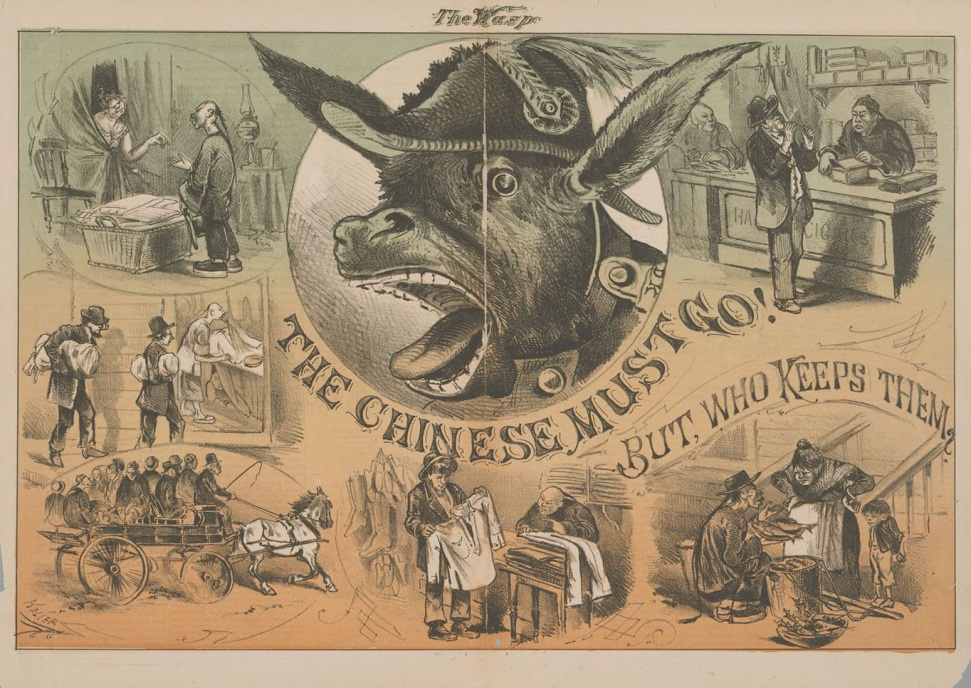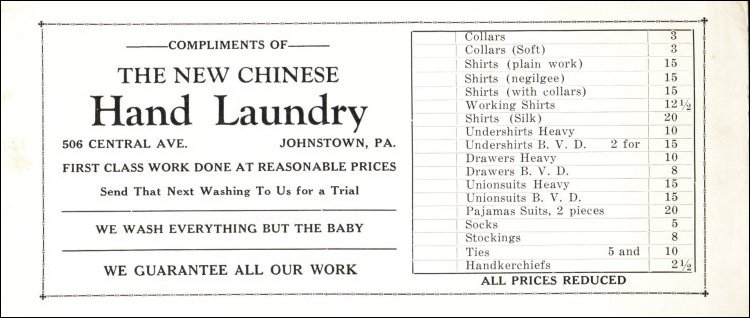Searching for Jobs

The solution to this was for Chinese men to seek employment in professions considered feminine, and a lucrative one was laundry. About quarter of Chinese men worked in a laundry during the early parts of the 19th century, sometimes working 10-14 hours a day. It was hard work, but it wasn’t as dangerous as working on the railroads, and it didn’t threaten the white American male population. These workers also often ended up owning the laundries that they worked at and employed their family members, which saved them money, since they didn’t have to provide family members with a salary. This allocation of jobs is why many laundromats and dry cleaners today are owned by Chinese families, as it’s a dependable business model and a much-desired service.

The restaurant business was also a very common one to go into for Chinese immigrants. Chinese-owned restaurants had already been opened in California before the Transcontinental Railroads were finished. Because of the racism and xenophobia against the Chinese, laws, such as the Chinese Exclusion Act, were passed that created restrictions on which Chinese immigrants could enter or re-enter the country. There were many legal bars preventing a larger influx of Chinese immigrants, but they were allowed to purchase visas if they were merchants, and in 1915, “restaurant-owner” was allowed to be that type of merchant (Godoy). This caused a huge amount of Chinese immigrants to apply for visas as potential restaurant-owners. Many people actually left the laundering business in order to work at a Chinese restaurant, as it was better pay and less physically-demanding work. These restaurant owners could also eventually bring over their families and friends from their home countries after a bit of time in the business and filling out the correct applications. This made the restaurants family-owned, just like the laundromats, and this was a financially savvy business model and a way to bring people to the States.